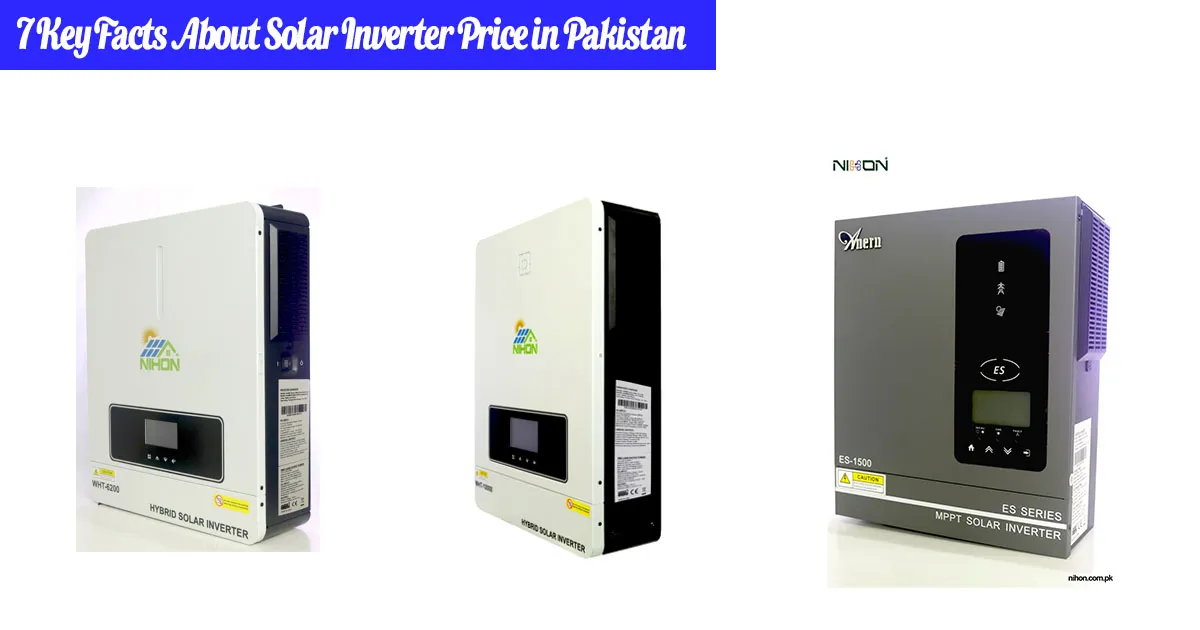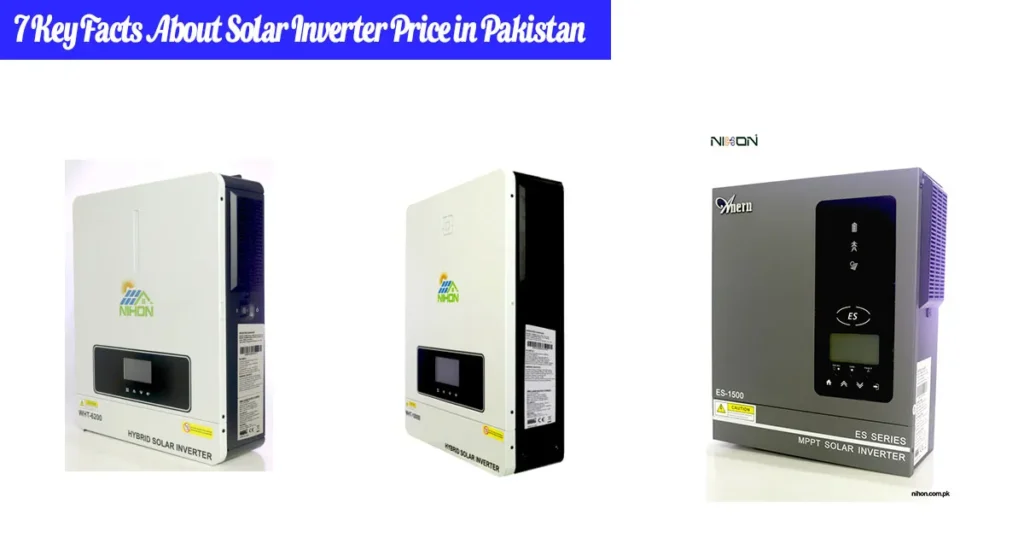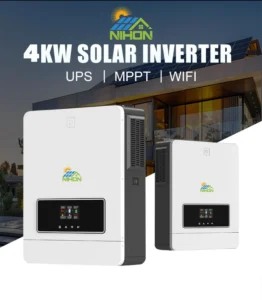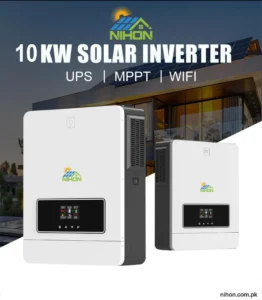Navigating Solar Inverter Prices in Pakistan: What You Need to Know for 2024
Introduction: Setting the Scene
The shift toward renewable energy is more relevant than ever in Pakistan, as individuals and businesses explore options to become less reliant on the grid. Solar inverters—critical for converting solar energy into usable electricity—play a major role in solar installations. However, rising prices for solar inverters in 2024 have left many consumers wondering whether they can still afford the transition. This post dives into current inverter pricing in Pakistan, explores what’s driving these costs, and offers practical advice for anyone considering solar power.

Problem: Understanding the Price Surge in Solar Inverters
Solar inverters, which convert direct current (DC) from solar panels into alternating current (AC) usable by home appliances, are a key part of any solar energy system. In Pakistan, prices for these essential devices have seen a substantial increase over the past year.
To break it down, here’s a snapshot of the current solar inverter prices in Pakistan range for popular solar inverters:
- 1 kW Inverter: Approx. Rs 20,000 – Rs 35,000
- 3 kW Inverter: Approx. Rs 45,000 – Rs 80,000
- 5 kW Inverter: Approx. Rs 85,000 – Rs 150,000
- 10 kW Inverter: Approx. Rs 170,000 – Rs 300,000
- 15 kW Inverter: Approx. Rs 300,000 – Rs 500,000
These solar inverter prices represent on-grid inverters, which do not include batteries for storage. Hybrid inverters, which support battery integration, typically cost 25–30% more due to additional functionality, making the price hike even steeper for those looking for backup power options.
Why Are Solar Inverter Prices in Pakistan Rising?
Several factors contribute to this price surge. Firstly, the cost of production has increased globally due to inflation and rising component prices. Secondly, the demand for solar equipment is climbing as both residential and industrial sectors in Pakistan turn to alternative energy solutions. Thirdly, regulatory costs and fluctuating currency rates have impacted imports, increasing costs for consumers.
The sudden increase in prices has created concern among those who planned to go solar, as inverter costs make up a significant portion of the overall solar system investment.
Agitation: Why This Matters to Pakistani Consumers
- Cost Implications for Households
- For families hoping to reduce their energy bills with solar power, the initial cost is often a deciding factor. With the rise in inverter prices, a solar system setup can stretch budgets, making it harder for an average household to justify the upfront investment.
- Impacts on Small Businesses
- Small businesses looking to minimize operational costs through solar installations face a similar challenge. Higher inverter prices mean longer payback periods, delaying potential savings. Small business owners often lack the capital needed for a large initial investment, making these price increases particularly problematic.
- Challenges with Hybrid Systems
- Hybrid inverters, which allow for energy storage through batteries, provide a reliable solution for areas with frequent load-shedding. However, the higher prices for hybrid inverters, coupled with battery costs, make this option increasingly expensive. As a result, consumers are often left weighing the benefit of backup power against affordability, creating stress for those in areas where power reliability is a concern.
- Environmental and Energy Independence Goals
- Many consumers choose solar power to reduce their carbon footprint and achieve energy independence. However, the recent price surges pose a barrier to these goals, potentially slowing down the adoption of renewable energy in Pakistan and impacting the country’s environmental targets.
Solution: Strategies for Managing Solar Inverter Costs
Despite the cost challenges, there are practical steps that can help consumers manage the rising expenses of solar inverters while still benefiting from solar power.
1. Determine the Right Inverter Size for Your Needs
- One way to control costs is to select an inverter that matches your actual energy usage. Instead of opting for a larger, more expensive inverter, consider your household or business needs carefully. For example, a 5 kW inverter may be more than enough for an average household, whereas a small business with high energy consumption might need a 10 kW inverter. Assess your peak energy usage and consult with a solar provider to avoid over-investing in inverter capacity.
2. Consider Financing and Payment Plans
- Many banks in Pakistan now offer financing options for solar installations. Look for green financing programs or specialized loans with lower interest rates, which can spread out the cost over time. By reducing the initial financial burden, these options make it easier for consumers to manage the costs associated with pricier inverters.
3. Explore Options for On-Grid vs. Hybrid Systems
- While hybrid systems are valuable for areas with unstable power, they are not always necessary. If you live in an area with relatively stable electricity, an on-grid inverter may be sufficient, helping you save on initial costs. However, for those in load-shedding-prone areas, a hybrid system might still be worth the investment in the long term, despite the higher upfront cost.
4. Take Advantage of Subsidies and Incentives
- The Government of Pakistan has been promoting renewable energy through subsidies and incentives in certain areas. Check with local authorities or energy providers for any available programs, such as tax deductions or rebates, that might reduce the effective cost of your solar inverter.
5. Opt for High-Quality Brands with Warranties
- While it may be tempting to cut costs by selecting a cheaper brand, investing in a high-quality inverter with a good warranty can save money in the long run. Reliable brands like Huawei, Inverex, and Fronius offer quality inverters with solid warranties that cover repair or replacement, ensuring that your system remains functional and efficient. While these inverters may have higher upfront costs, the savings on maintenance and repairs over time can offset these expenses.
6. Compare Suppliers for the Best Deals
- Solar equipment prices can vary among suppliers, so it’s a good idea to compare multiple vendors before committing to a purchase. Some solar providers offer packages that include installation, which can reduce the overall cost. By shopping around, you can find a competitive deal that fits your budget without sacrificing quality.
7. Stay Informed About Solar inverter Prices in pakistan Trends
- Solar inverter prices in Pakistan may fluctuate with changes in the market, currency rates, and global demand. By keeping an eye on these trends, you might be able to time your purchase during a period of relative stability or even find seasonal discounts.
Case Study: The Reality of Solar Costs for a Typical Pakistani Household
To illustrate the current situation, let’s look at an example of a family in Lahore who recently installed a solar system.
Household Profile:
- Energy Consumption: Approx. 600 units per month
- Chosen System: 5 kW solar system with an on-grid inverter
- Total Cost: Rs 750,000 (including installation)
Due to the recent price increase, the family’s inverter alone cost around Rs 100,000 more than they had initially budgeted. However, they chose to proceed due to their high monthly electricity bills, which ranged from Rs 20,000 to Rs 25,000. By financing the system through a green loan with a 5-year term, they were able to manage the upfront cost. Based on current usage, they expect the system to pay for itself within 5–6 years, after which they will see substantial savings.
Lessons from the Case Study:
- Importance of Financing: Without a green loan, the upfront cost would have been too high for the family.
- On-Grid Advantage: As the family lives in an area with stable electricity, they saved money by opting for an on-grid inverter instead of a hybrid model.
Conclusion: Balancing Cost with Long-Term Value
The rising prices for solar inverters in Pakistan pose challenges, but for many investors the investment remains worthwhile. By carefully selecting the right inverter size exploring financing options, and considering on-grid vs. hybrid systems, consumers can still reap the benefits of solar power without breaking the bank.
While the upfront costs are higher, the potential for savings on electricity bills—and the peace of mind that comes from energy independence—can make solar power a smart choice for Pakistani households and businesses alike. For those considering solar, patience and planning are key: with thoughtful investment, the path to renewable energy remains viable and beneficial, despite recent market fluctuations.
This blog post would be structured with a blend of factual information and actionable advice, keeping the tone engaging and realistic without relying on fancy language. Each section flows smoothly into the next, giving readers a comprehensive understanding of solar inverter pricing in Pakistan and practical tips to navigate the current cost landscape. Let me know if you would like to expand on any part of this outline or need more specific data!



